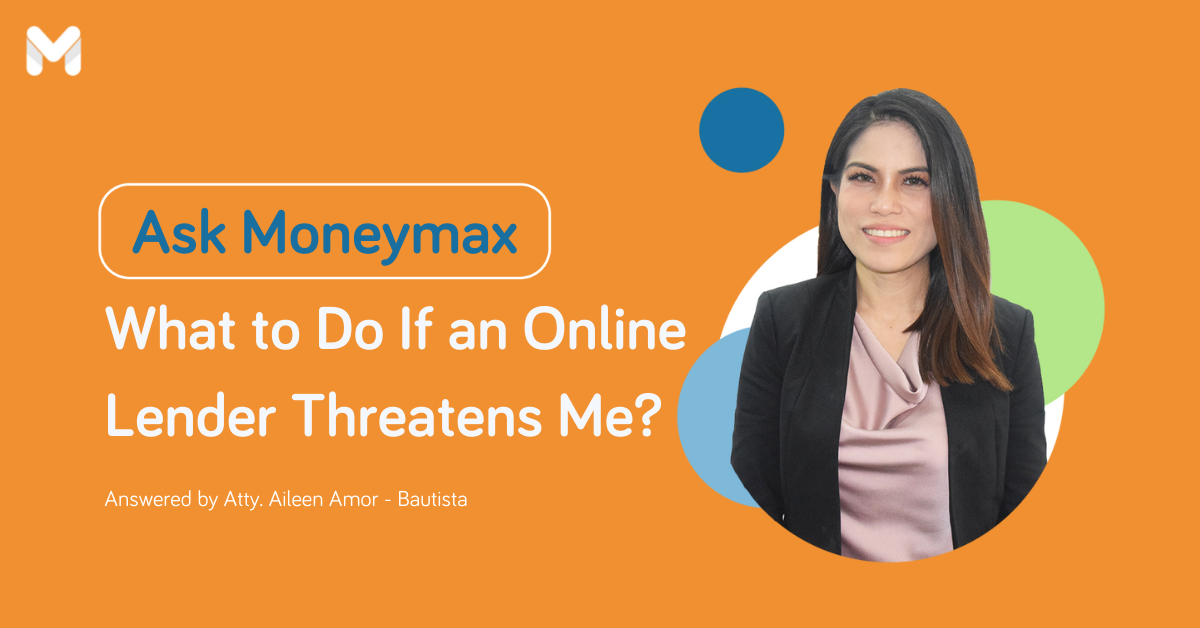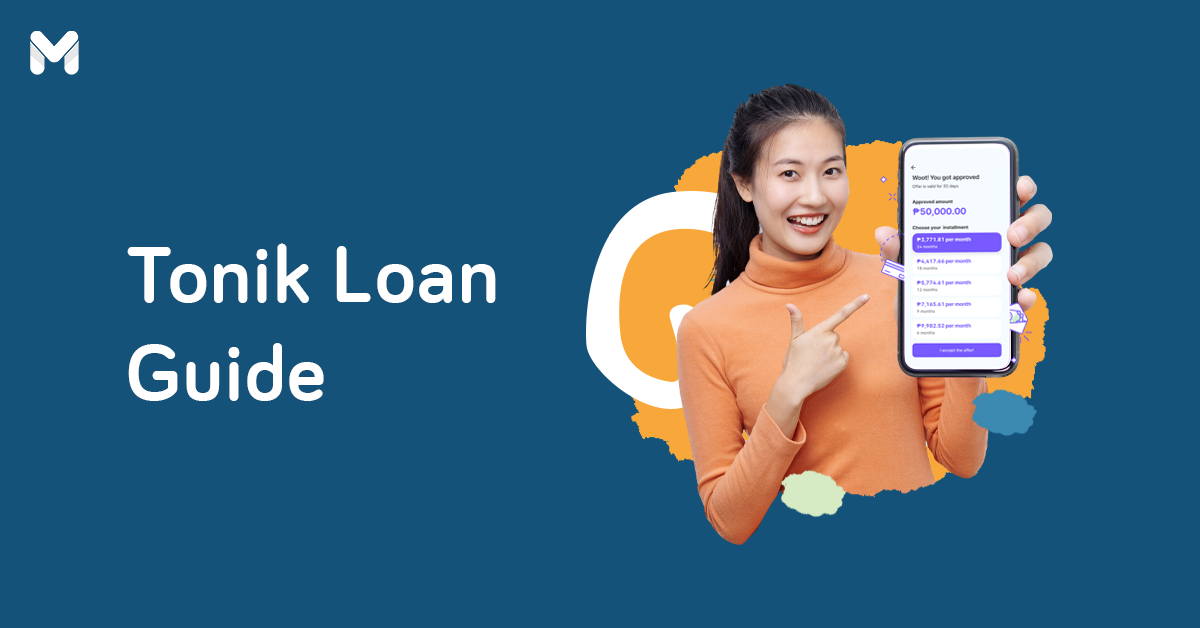Peer-to-peer lending in the Philippines may be unfamiliar to many Filipinos. But it can be a good option for those with a bit of money to invest or those who need a loan but don’t want to go to traditional banks.
This article will discuss peer-to-peer lending, its pros and cons, and how it works.
What is Peer to Peer Lending?
Peer-to-peer lending, also known as P2P or crowd lending, is a money lending platform for individuals and businesses, without a financial institution acting as a middleman.
It's an online service that matches borrowers with lenders that offer their services, most of which are unsecured loans. As a result, lenders or investors earn from higher interest rates, and borrowers get quick, easy loans that they otherwise can’t from traditional lenders.
How Does Peer-to-Peer Lending in the Philippines Work?
-Nov-29-2023-07-16-25-6446-AM.png?width=600&height=400&name=Pics%20for%20blog%20-%20600x400%20(4)-Nov-29-2023-07-16-25-6446-AM.png)
Peer-to-peer lending platforms need investors to lend the money and borrowers to take out loans. Here’s how peer-to-peer lending works for both borrowers and lenders.
👉 For P2P Borrowers
If you need a quick loan but don’t want to go through the lengthy processes that traditional banks or financial institutions typically impose, you can submit an online loan application on any P2P lending platform. There’s still a pre-qualification screening process, though not as strict as those of traditional banks.
After submitting your application, the P2P lending platform will assess your application and review your profile based on your creditworthiness. In short, they'll see whether you’re a good fit for the lenders’ investment needs.
If your application is approved, the investors will fund your loan. You'll have several options as to how to receive the loan proceeds—with the appropriate interest rates and repayment period.
👉 For P2P Lenders
If you’re interested in investing in P2P lending, you don’t need hundreds of thousands of pesos as an investment. You can be an investor or a lender for just ₱5,000.
Find a P2P lending platform that’s right for you. Sign up as a lender, which entails answering questions about how much you want to invest, how long you want to invest, and how much interest you want to receive.
Once you become a P2P investor, you can fund your account and receive loan applications from borrowers. Simply choose which loans you want to finance or invest in.
You don’t need to worry about administrative tasks like loan disbursement and payment collection. Payments to your loans will just be remitted to your P2P wallet or bank account.
Pros and Cons of Peer-to-Peer Lending for Borrowers
-Nov-29-2023-07-19-26-7215-AM.png?width=600&height=400&name=Pics%20for%20blog%20-%20600x400%20(5)-Nov-29-2023-07-19-26-7215-AM.png)
If you’re strapped for cash, here are some things that may convince you to borrow from a peer-to-peer lending platform:
👍 Fast and Convenient Way to Get a Loan
Since loan applications are done online, you can quickly get feedback on your loan application. This is very helpful to borrowers who urgently need cash but don’t want to go through the lengthy process of loan applications with banks.
👍 No Hard Credit Checks
As mentioned, although you still need to pass credit checks to ensure you can repay the loan, P2P lending platforms are not as strict as those of traditional banks and financial institutions. You can still get approved for a loan, but with higher interest rates.
👍 No Collateral Required
Because P2P loans are unsecured loans, you don’t need collateral. No need to worry about tying personal properties to your loans and losing them in case you default on payments.
For all its advantages, however, there are still risks involved in getting a loan from a P2P platform:
👎 Additional Fees
On top of the interest rate, you may have to pay an extra fee for using the platform. Make sure to check how much these fees are before availing of your chosen platform's services.
👎 Higher Interest Rates
Depending on your credit assessment, platforms could charge you higher interest rates. If you have a low rating, you may have to pay higher fees. Over time, your payments may end up snowballing.
👎 Limited Availability
Peer-to-peer lending in the Philippines is nowhere near as popular as loans from traditional banks or online lenders. Due to this, it may not be as accessible to most borrowers.
Pros and Cons of Peer-to-Peer Lending for Investors
-Nov-29-2023-07-20-22-2479-AM.png?width=600&height=400&name=Pics%20for%20blog%20-%20600x400%20(6)-Nov-29-2023-07-20-22-2479-AM.png)
There are advantages to investing in peer-to-peer lending platforms. Here are just some of them:
👍 Higher Rates of Return
In general, returns on P2P lending investments are high, even if you deduct management or administrative fees. P2P lending platform Blend.ph offers up to 30% investment returns. But this will depend on how much and how long you invest.
Moreover, loans with negative returns can be evened out by higher returns, which still counts as a win overall.
👍 Option to Build or Diversify Portfolio
On peer-to-peer lending platforms, you enjoy more control over your investments. You can choose which loans to fund based on specific criteria, like loan term, loan amount, or credit score range. As a result, you’re in control of variables that can affect your investments.
👍 Additional Passive Income Stream
Unlike when you put your money into high-interest savings or time deposit accounts, the money you invest in peer-to-peer lending platforms will yield higher ROI in just months. From these monthly payouts, you can create a source of passive income.
👍 Affordable Investment Option
With just ₱5,000, you can fund loans and grow your investment by reinvesting your earnings. It’s an excellent option for first-time investors looking for an uncomplicated investment vehicle.
However, as with any investment that promises high returns, disadvantages and risks must be considered. Peer-to-peer lending is not entirely risk-free, so here are some things you should know about:
👎 Borrowers with Bad Credit and Higher Default Risk
Most of the borrowers you'll find on P2P platforms have zero, limited, or bad credit histories. This means that their risk of defaulting on their loans is also higher.
Also, because P2P lenders mostly provide unsecured loans, there’s no collateral that investors can go after if a borrower can no longer pay for the loan.
👎 Not a Liquid Investment
If you want to take out your investment today, you can't. You need to wait until a borrower has fully paid off the loan. So consider your P2P investment a long-term investment.
👎 Possible Loss of Investment During Economic Downturns
During an economic recession, there can be major liquidity issues when investors withdraw their money at the same time. Widespread loan defaults can also result in diminished returns or even loss of your investment.
4 Peer-to-Peer Lending Companies in the Philippines
📌 Vidalia Lending

This P2P lending platform based in Manila offers personal loans, salary loans, and small business loans.
According to its website, Vidalia loan investors typically earn 1% to 1.50% per month or roughly 18% per year. Vidalia Lending protects and secures your capital. Your monthly or quarterly earnings are deposited directly into your bank account.
Vidalia Loan Features
- Minimum loan amount: ₱5,000 (personal loan) /₱500,000 (business loan)
- Repayment period: Three up to 12 months
- Interest rate: 4% to 6%
- Payment terms: Daily, weekly, semi-monthly, monthly
How to Apply for a Vidalia Loan
- To apply for a loan, visit Vidalia's official website[1] and click Borrow.
- Upon submission, Vidalia will conduct a credit evaluation.
- You should get a response within 24 hours if you’re qualified.
How to Invest Through Vidalia
- Just open an account online and transfer a minimum of ₱5,000.
- You’ll receive an email confirmation upon successful account activation.
- Fund loans and get your capital and earnings in your bank account on the loan maturity date.
📌 Kiva Philippines

Kiva is an international nonprofit founded in San Francisco in 2005. The organization’s mission is to provide financial access to underserved communities.
With Kiva Philippines, you can fund loans for just US$5 and let other investors complete the remaining amount. Many different lenders can contribute to the goal, so you can stick to the US$5 funding. But if you want to contribute more, you can do that, too.
Kiva is available in 80 countries, including the Philippines, with 2.2 million lenders and 4.8 million borrowers. It has also funded approximately US$1.98 billion in loans. Its official website shows Kiva’s historical repayment rate is 96.4%.[2]
How to Apply for a Kiva Loan
- Apply for a loan through a Kiva Field Partner (designated people who identify, vet, and screen borrowers, disburse loans, and collect payments) or directly on the Kiva website.
- The loan then undergoes an underwriting and approval process.
- For loans applied through Kiva Field Partners, the loan proceeds are pre-disbursed. However, there will be a fundraising period for loans applied for through the Kiva website. Once the goal amount is reached, the money will be released to you.
How to Invest Through Kiva
- Sign up for an account on the website.
- Head to https://www.kiva.org/lend-by-category.
- Look for a loan you’re interested in investing in. Click Lend and Checkout Now.
- Follow the prompts accordingly.
- After the borrower repays the loan, you can use the repayments to fund new loans, make donations, or withdraw the money.
📌 Blend.PH

The P2P lending platform Blend.PH prides itself on being one of the P2P pioneers in the Philippines. Managed by Inclusive Financial Technologies and founded in 2016, Blend.ph[3] connects lenders who want to grow their investments to borrowers who need money to fund their goals.
Blend.PH Loan Features
- Minimum investment: ₱5,000
- Interest: 6% to 30% per annum
- Fast Loan: ₱10,000 to ₱40,000
- Interest rate: 8% per month
- Payment terms: Three to six months
- Personal Loan: ₱50,000 to ₱2,000,000
- Interest rate: Depending on risk type
- Seafarer Loan: ₱50,000 to ₱500,000
- Interest rate: 3.5% per month
- Franchise Loan: ₱50,000 to ₱2 million
- Interest rate: 2% per month
- Payment terms: 12 to 36 months
- Salary Loan: Equivalent to one-month salary
- Interest rate: 3% per month
- Payment terms: One to six months
How to Apply for a Blend.PH Loan
- To apply for a loan, create your Blend.PH account and enter all the required information.
- Submit all required documents so that your loan application will be evaluated and verified.
- Once it's approved, it will be auctioned within Blend.PH so that lenders can start funding it.
- Once it's funded, you'll then receive your loan proceeds.
How to Invest Through Blend.PH
- Create your Blend.PH lender account.
- Fund your wallet by depositing to the designated bank account number. After which, upload the bank transfer screenshot or a copy of the deposit slip.
- The transaction will be verified and approved, and your deposit should be reflected in your Blend Wallet.
Read more: Blend PH Loan Review: Everything to Know About This Online Personal Loan
📌 SeedIn

This company was launched in 2014 and is Southeast Asia’s largest business financing platform. It connects local businesses that need short-term financing with companies or individuals looking for short-term investments. Since its launch, it has facilitated almost ₱10 billion in funds.
SeedIn Features for Investors
- Short tenure of one to 12 months
- Annualized returns from 7%
- Monthly interest rate payout
SeedIn Features for Borrowers
- Fast approval in just seven days
- Approval based on a business’s growth potential
- Flexible financing options
- Fixed interest rate, no hidden fees
- Over US$260 million funded businesses
How to Apply for a SeedIn Loan
- Check your eligibility by filling out the online application form. A SeedIn representative will contact you to talk about your loan application and options.
- You will undergo eligibility verification and must confirm the loan amount if approved.
- Sign your documentation to receive the funds in your nominated account.
How to Invest Through SeedIn
- Download the Seedin mobile app from the Apple App Store or Google Play Store.
- Sign up as a Seedin investor and provide all the required information and documents.
- Fund your SeedIn account via online banking or e-wallet (Coins.ph or GCash).
- For a minimum of ₱1,000, you can choose which project to invest in.
- After a successful investment, your funds will be put on hold while the project completes the subscription stage.
- Once the project is closed, you’ll receive monthly payouts according to the payment terms.
P2P Lending in the Philippines: FAQs
1. Is peer-to-peer lending safe?
Any investment carries a risk, including P2P lending. But you can make money safely through P2P lending platforms if you determine which P2P lenders are reputable and understand how this type of investment works. It also helps to know the risks involved and how to manage them.
2. Is P2P lending a good investment?
Yes, it’s a good investment with competitive returns. But during economic downturns, you can limit your investment in P2P platforms to reduce risk.
3. Can you make money with peer-to-peer lending?
Yes, it’s a great way to earn passive income. You can start investing for just ₱5,000 with an average interest of 2% per month or 24% per year.
4. I’ve read mixed FundKo reviews online. Is it a P2P lender?
Yes, it is. However, the Securities and Exchange Commission found it to have violated Republic Act No. 7494 for engaging in unauthorized lending activities and online solicitation of investments from the public.[4]
Read more online loan application guides:
- Borrowing Through Tala App? Read This Tala Loan Application Guide
- RFC Loan Guide: How to Apply for a Loan from Radiowealth Finance
- GLoan, GGives, and GCredit: How to Avail of a Loan in GCash
- Tonik Loan: Application Features, Requirements, and More
Final Thoughts
If you wish to invest in peer-to-peer lending in the Philippines, take it nice and slow. Don’t get too excited about the high returns; learn everything about how it works first.
And if you’re a borrower, consider taking a personal loan as well. These lenders may be more stringent when it comes to requirements, but they offer more flexible repayment terms and more affordable interest rates—plus they’re safer. Compare your options and apply through Moneymax:
|
Provider
|
Loan Amount
|
Monthly Add-on Rate
|
Loan Term
|
Minimum Annual Income
|
Approval Time
|
|---|---|---|---|---|---|
|
UnionBank Personal Loan
|
Up to ₱2 million
|
26.9% per annum
|
12 to 60 months
|
₱250,000
|
As fast as 5 minutes
|
|
UNO Digital Bank Personal Loan
.png?width=149&height=52&name=Unobank-Logo-Colored_Horizontal-Medium%20(for%20MMX).png) |
₱10,000 to ₱500,000
|
1.79% per month (corresponds to annual contractual rates or annual percentage rates ranging from 35.78% to 37.54%)
|
Six to 36 months
|
₱240,000
|
Five to seven banking days
|
|
Metrobank Personal Loan
|
₱20,000 to ₱2 million
|
1.25% to 1.75%
|
36 months
|
₱350,000
|
Seven banking days
|
|
BPI Personal Loan
 |
₱20,000 to ₱3 million
|
Maximum annual contractual rate of 28.67%
|
12 to 36 months
|
Inquire with BPI
|
Five to seven banking days
|
|
Tonik Credit Builder
 |
₱5,000 to ₱20,000
|
4.84%
|
Six to 12 months
|
Inquire with Tonik
|
Two banking days
|
|
Tala

|
₱1,000 to ₱25,000
|
0.43% daily
|
Up to 61 days
|
None
|
Five minutes to 24 hours
|
|
HSBC Personal Loan
|
₱30,000 to ₱500,000
|
0.65%
|
Six to 36 months
|
₱168,000
|
Five to seven banking days
|
|
CIMB Personal Loan
|
₱30,000 to ₱1 million
|
As low as 0.83%
|
12 to 60 months
|
₱180,000
|
One to two banking days
|
|
Maybank Personal Loan
|
Up to ₱1 million
|
1.3%
|
Up to 36 months
|
₱300,000
|
Inquire with Maybank
|
|
RCBC Bank Personal Loan
 |
₱50,000 to ₱1 million
|
1.3%
|
Six to 36 months
|
₱360,000
|
5 to 7 banking days
|
|
PSBank Personal Loan
 |
₱20,000 to ₱250,000
|
|
24 or 36 months
|
₱180,000
|
Five to nine banking days
|
Sources:
- [1] Vidalia
- [2] Kiva
- [3] Blend.PH
- [4] SEC-EIPD Case No. 2018-0977 FUNDKO AND FINTECHNOLOGY INC. Respondent (Securities and Exchange Commission, 2021)









